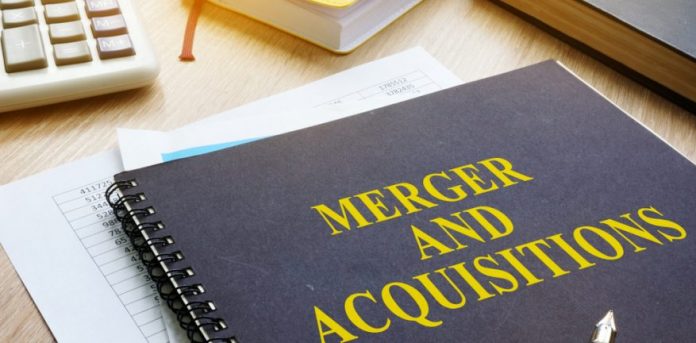This article has been written by Shubham Singh, pursuing a Diploma in M&A, Institutional Finance and Investment Laws (PE and VC transactions) from LawSikho and edited by Shashwat Kaushik.
Table of Contents
Introduction
Carrefour made its entrance into the market in 1991 by acquiring two hypermarkets of Euromarché, which was a French hypermarket chain. In 2007, Carrefour was doing its business in Portugal under two banners, namely Carrefour-Portugal (hypermarkets) and Minipreço (discount chain).
Around 2007, Carrefour was the biggest retail chain globally in size, and it was the second biggest retailer in terms of revenues. In 2007, Carrefour had annual sales of around 100 billion Euros and Carrefour’s operations at the time of the acquisition were primarily focused in Europe, Asia and Latin America. Carrefour had more than 15,000 stores in around 30 countries. It was Carrefour who introduced the model of hypermarkets, i.e., everything will be made available at a single stop.
Carrefour focused on adjusting its stores and products to different locations and markets. Although it has a presence worldwide, it still focuses on catering to markets and products as per local needs and demands, and in doing so, it aims to ensure that the majority of the products it offers in its retail stores come from nationwide suppliers of that explicit market.
Sonae Distribuição is a retail branch of Sonae. Sonae Distribuição was the final creation of a joint venture between Sonae and Promodés in 1995. But in the year 1998, Carrefour and Promodés were merged and Sonae Distribuição started facing difficulty as 22.37% of the equity of the company was now owned by Carrefour and Carrefour was a competitor of Sonae Distribuição. Sonae Distribuição found the solution to this problem in 2004, when it was successful in buying the rights held by Carrefour in the company. After buying the rights to Carrefour, the company Sonae Distribuição decided to get out of the stock market to avoid any such difficulties in the coming future.
By 2007, Sonae Distribuição had become the top player in the food retail and non-food retail markets. It generated annual sales of 3.4 billion Euros, and it covered around 70% of the Portuguese market.
Why this acquisition
The process of mergers and acquisitions (M&A) is chosen by entities for the reason that it adds value for the shareholders, and it is also chosen because the worth of both entities together is greater than when they were conducting their business individually and separately. Through the process of M&A, companies can gain knowledge and improve their operational capabilities and resources and the scope of economic growth increases at a greater pace than before. And this acquisition by Sonae Distribuição of Carrefour-Portugal was no different.
This acquisition first gave Sonae Distribuição a chance to expand its market, increase its sales and capture a larger market share. That means less competition for Sonae Distribuição in terms of price. It also favoured Sonae Distribuição as it increased its bargaining capabilities with the company’s suppliers because Sonae was now capturing around 30% of the market share post-acquisition. It helped Sonae beat its competition, as even after reducing its profit margin, the sales figures were high and ultimately, the competitor’s profits were taking a continuous hit. Sonae also got access to the exclusive range of products offered by Carrefour-Portugal before the acquisition.
As the companies were operating in the same sector and targeting the same group of people in the same market area, no issues were faced after the acquisition process was complete. The position of the company only strengthened and it achieved a stronghold in the market. In addition, there was knowledge transfer and employees or managers were not required to learn to deal with the business and could focus mainly on achieving the most profitability out of the business. There was also no risk of any pushback from a cultural perspective, as both of them were following the French way of doing business and its retail tradition.
After any acquisition, one of the main concerns faced by the employees of both companies involved in the acquisition process is job security. Sonae Distribuição improved its productivity by managing its human resources and by announcing no layoffs, and instead of laying off any employees of Carrefour or itself, it decided to hire additional employees to improve its service. Sonae Distribuição formed a team especially focused on improving the cooperation among employees of both Sonae Distribuição and Carrefour-Portugal post-acquisition through proper communication and planning. It focused on minimising conflict and improving the seamless sharing of knowledge.
Sonae decided to provide training to its salespersons for informing and making the customers aware of the benefits of the acquisition and telling them how this acquisition would be beneficial for them in terms of quality services, a wider range of products and cost-effectiveness when compared with previous companies separately.
The acquisition
Carrefour in 2007 had negotiations with Sonae Distribuição and in the month of July of the same year, a deal broke between them and as a result, Carrefour agreed to sell its Portuguese business to Carrefour for a sum of 662 million Euros. This deal helped Sonae Distribuição increase its business area, which included 105 Modelo stores (1,87,000 sq. m.) and 19 Continente stores (1,62,000 sq. m.), as well as the Carrefour business (83,000 sq. m.). Before the deal was finalised, Auchan and Jerónimo Martins were the competitors of Sonae Distribuição for this deal. As per Carrefour in 2006, its sales were 530 million Euros, excluding VAT (Value Added Tax). Sonae Distribuição’s CEO stated in a press conference that this acquisition would be financed 100% by debt already incurred.
Sonae Distribuição had several reasons for moving ahead with the acquisition of Carrefour-Portugal; one of them was that both had the same portfolio and hence it was a perfect fit. The deal focused only on the hypermarket business and it was of the same nature as the Continente stores. This deal was a path for Sonae Distribuição to re-achieve its position as the market leader in the food segment. This deal would also be fatal to the competitors of Sonae Distribuição, and additionally, it would also help Sonae Distribuição safeguard its position in the market from interested foreign competitors by restricting their entry into Portugal. This deal would also help Sonae Distribuição make an entry into specific regional markets like Aveiro and Braga, where it had no presence but Carrefour-Portugal did because of legal constraints.
To avoid any failure Sonae Distribuição and Carrefour decided to move ahead with the acquisition process in the very next month of August 2007, way before getting approval from the appropriate authorities. The aim was to find the most favourable and fastest manner of acquiring Carrefour-Portugal and to also win the trust of the stakeholders.
The 12 hypermarkets of Carrefour-Portugal along with 11 licences to open new stores and 8 gas stations, were part of the deal with Sonae Distribuição and Sonae bought these operations for 600 million Euros.

What happened after the acquisition
Sonae Distribuição integrated every Carrefour store into its own portfolio and hence the same organisational processes and procedures were followed by the Carrefour stores. The extra space with Sonae Distribuição after the acquisition was used by it for opening new non-food retail stores like Modalfa, SportZone and Worten stores.
To create a stronger portfolio, the existing portfolios of the products offered by both companies before the acquisition were analysed. The acquisition helped Sonae Distribuição improve its service towards its customers and ultimately increase customer satisfaction and for that, Sonae Distribuição hired a couple of extra hundred employees.
Risks related to the acquisition
The acquisition was horizontal in nature, as the products were similar. The work of employees was somewhat similar but the main difference was in the culture of Sonae Distribuição and Carrefour-Portugal, which could be tough for the employees to adjust to. Carrefour-Portugal’s work environment had an impression of being more independent and autonomous, which could be a major factor in dissatisfaction with its employees while working for Sonae Distribuição post-acquisition. The expected returns were also a concern for Sonae Distribuição as it was paying 662 million Euros for the acquisition when, at the same time, in 2007, its competitors like the Auchan Group invested a global investment of 337 million Euros, which was half the amount paid by Sonae Distribuição. This was a big and risky decision for Sonae Distribuição to make, considering the deal only focused on one region while its competitors were investing in other markets globally in the same year.
Conclusion
Sonae Distribuição’s decision to acquire Carrefour-Portugal Carrefour was a strategically correct one. It helped Sonae improve its visibility and reach in markets, which it could not normally achieve due to legal restrictions. This deal improved the sales numbers and reach of Sonae in food as well as non-food stores and Sonae was able to re-achieve its dominant position in Portugal’s market. The business of Sonae Distribuição got diverse and improved cash flow in the business, and additionally, it also improved the bargaining competency of Sonar. With the acquisition, Sonae improved its ability to innovate a new range of products, target new clients, and serve its customers better. Funds were specifically allotted for the same purposes by Sonae.
In the first year after the acquisition in 2007, Sonae Distribuição was able to achieve growth in the stores that Carrefour-Portugal earlier owned by Carrefour-Portugal, The efficiency was improved, operational margins were surpassed as compared to the previous year in the food division and it was able to retain the levels of total EBITDA margin [EBITDA margin = (earnings before interest and tax + depreciation + amortisation) / total revenue], excluding fuel and thus it attained equilibrium between operational profit and growth.
In the year 2008, there was a reduction in private consumption, which impacted primarily the non-food segment, but the total turnover achieved by the company improved by around 25% and if we will not consider the petrol stations, then also the turnover improved by around 20%, whereas other stores or products with similar characteristics only reported an increase of 1%, which pointed out that the acquisition of Carrefour-Portugal was a right decision by Sonae Distribuição.
References
- https://www.reuters.com/article/idUSL2725051020070727
- https://run.unl.pt/bitstream/10362/9640/1/Goncalves_2009.pdf
- https://bib.kuleuven.be/files/ebib/jaarverslagen/Carrefour_2006(5).pdf
- https://www.scribd.com/document/13306411/CARREFOUR-DF-2006
- https://www.sonae.pt/fotos/dados_fin/rc2006ing_174308807357115c72aa7b7.pdf
Students of Lawsikho courses regularly produce writing assignments and work on practical exercises as a part of their coursework and develop themselves in real-life practical skills.
LawSikho has created a telegram group for exchanging legal knowledge, referrals, and various opportunities. You can click on this link and join:
Follow us on Instagram and subscribe to our YouTube channel for more amazing legal content.












